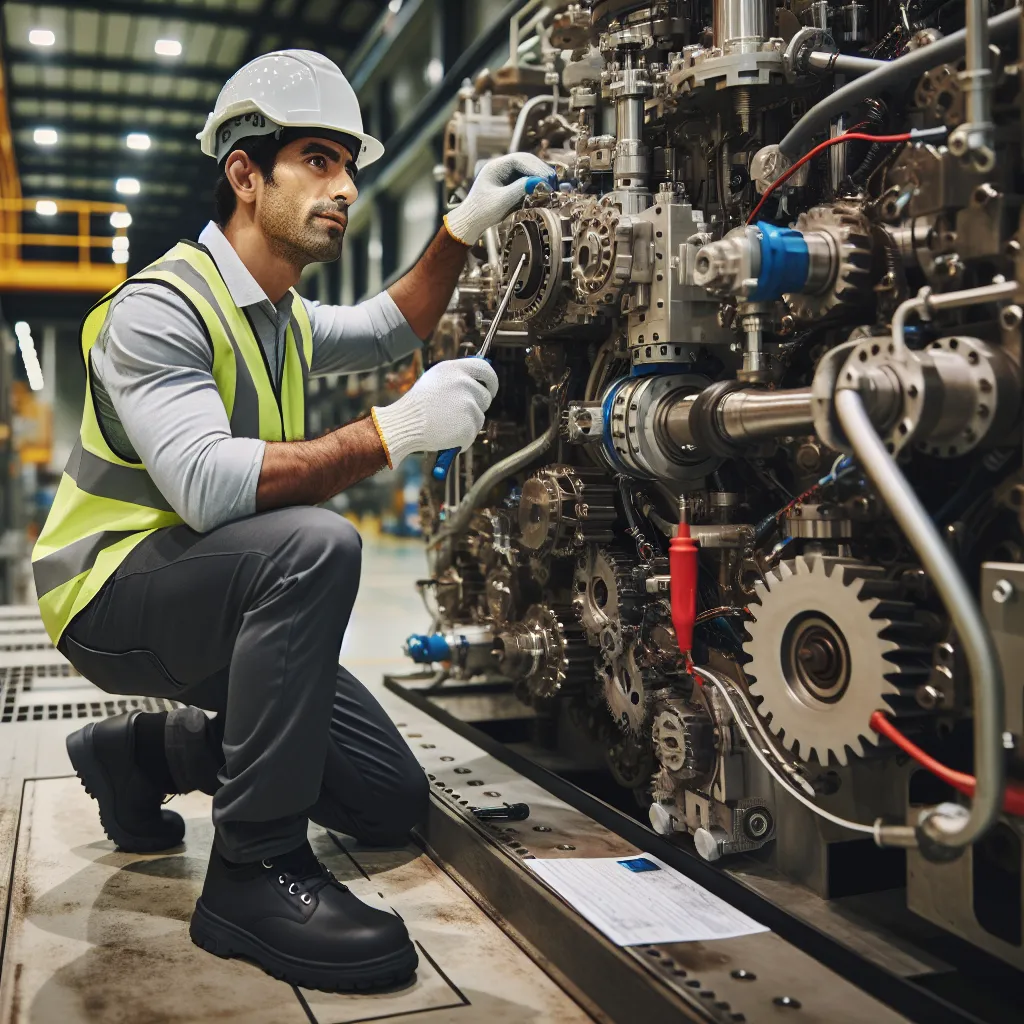Proactive Maintenance Strategies for Maximizing Equipment Uptime
Proactive maintenance strategies play a crucial role in maximizing equipment uptime and ensuring smooth operations in industrial settings. By implementing proactive maintenance measures, organizations can mitigate the risk of unexpected equipment failures and reduce downtime, leading to improved productivity and cost savings. One of the key best practices in proactive maintenance is the adoption of predictive maintenance techniques, such as condition monitoring and predictive analytics.
Condition monitoring allows maintenance teams to continuously assess the health of critical equipment by monitoring parameters such as temperature, vibration, and lubricant condition. By analyzing this data, potential issues can be identified and addressed before they escalate into major problems. Additionally, the integration of predictive analytics enables organizations to leverage historical data and machine learning algorithms to forecast equipment failures and schedule maintenance activities at the most opportune times, minimizing disruptions to operations.
Another essential aspect of proactive maintenance is the implementation of reliability-centered maintenance (RCM) principles. RCM focuses on identifying the specific failure modes of equipment and developing maintenance strategies tailored to address these potential failure scenarios. By conducting thorough risk assessments and prioritizing maintenance tasks based on criticality and impact, organizations can allocate resources efficiently and effectively to maximize equipment uptime.
Furthermore, fostering a culture of proactive maintenance within the organization is vital for long-term success. This involves providing comprehensive training programs for maintenance personnel, promoting collaboration between maintenance and operations teams, and incorporating proactive maintenance KPIs into performance metrics. By empowering employees with the necessary skills and tools to identify and address potential maintenance issues, organizations can create a proactive maintenance culture that is essential for maximizing equipment uptime.
In conclusion, proactive maintenance strategies, such as predictive maintenance techniques, RCM principles, and organizational culture initiatives, are integral to maximizing equipment uptime and achieving operational excellence. By embracing proactive maintenance best practices, organizations can enhance equipment reliability, minimize downtime, and ultimately drive overall business success.
The Role of Predictive Maintenance in Improving Equipment Reliability
Predictive maintenance plays a crucial role in improving equipment reliability and maximizing uptime in industrial settings. By leveraging advanced technologies such as sensors, data analytics, and machine learning, predictive maintenance allows for real-time monitoring of equipment conditions and performance. This proactive approach enables maintenance teams to identify potential issues before they escalate into costly disruptions, thereby reducing unplanned downtime and optimizing overall equipment effectiveness.
Through continuous monitoring and analysis of equipment data, predictive maintenance empowers organizations to move away from traditional time-based maintenance strategies towards a more proactive and efficient model. By accurately predicting when maintenance is actually needed based on the equipment’s current condition, resources can be allocated more effectively, and maintenance interventions can be scheduled at the most opportune times to minimize disruption to operations.
Furthermore, the insights derived from predictive maintenance not only enhance equipment reliability but also contribute to extending the lifespan of critical assets. By detecting early signs of wear, fatigue, or inefficiencies, maintenance teams can take preventive measures to address these issues, thereby reducing the likelihood of unexpected failures and costly repairs. This approach also fosters a culture of continuous improvement, driving optimization of equipment performance and reliability over the long term.
In conclusion, predictive maintenance emerges as a cornerstone of efforts to maximize equipment uptime and reliability. By harnessing the power of real-time data and advanced analytics, organizations can proactively manage their assets, minimize downtime, and unlock significant cost savings while ensuring operational efficiency.
Implementing Best Practices for Equipment Maintenance and Reliability
Implementing Best Practices for Equipment Maintenance and Reliability
Implementing best practices for equipment maintenance and reliability is crucial for maximizing equipment uptime. To achieve this, organizations need to focus on several key aspects.
Firstly, it is essential to establish a proactive maintenance approach rather than a reactive one. This involves regularly scheduled inspections, preventive maintenance tasks, and predictive maintenance techniques such as vibration analysis and thermography. By identifying and addressing issues before they lead to equipment failure, organizations can minimize downtime and extend the lifespan of their assets.
Secondly, investing in training and skill development for maintenance personnel is vital. Properly trained technicians are better equipped to diagnose problems accurately, perform maintenance tasks effectively, and make informed decisions regarding equipment reliability. Ongoing education and certification programs can ensure that maintenance teams stay updated with the latest industry practices and technologies.
Furthermore, leveraging technology such as computerized maintenance management systems (CMMS) and the Internet of Things (IoT) can provide invaluable insights into equipment performance and health. These tools enable the collection of real-time data, which can be used to optimize maintenance schedules, monitor asset conditions, and facilitate data-driven decision-making.
Collaboration between maintenance, operations, and reliability departments is also essential. By fostering a culture of teamwork and knowledge sharing, organizations can improve communication, streamline processes, and align goals to achieve higher equipment reliability.
Lastly, implementing a continuous improvement mindset is key to refining maintenance and reliability practices. By analyzing performance metrics, gathering feedback from maintenance personnel, and conducting regular reviews, organizations can identify areas for enhancement and implement changes to further optimize equipment uptime.
By implementing these best practices for equipment maintenance and reliability, organizations can effectively minimize downtime, increase equipment uptime, and ultimately improve their bottom line.




